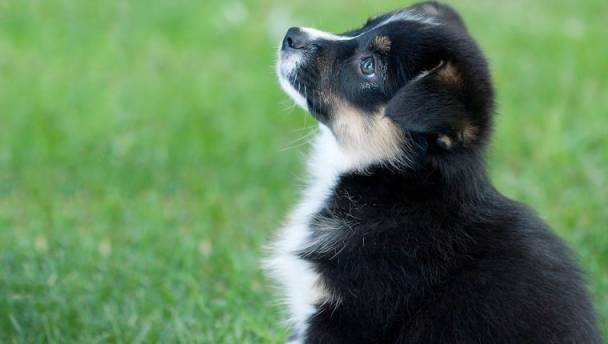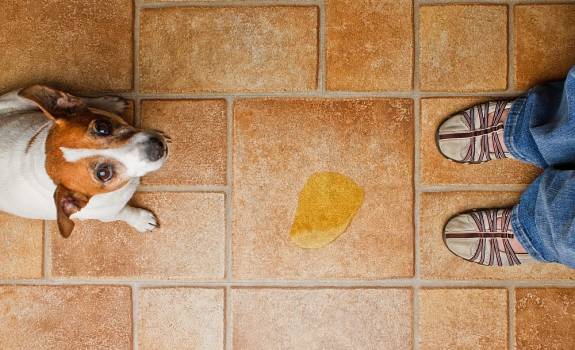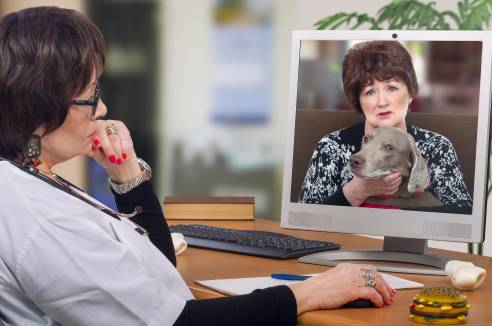We all like to experiment with foods and see if our furry friends like them. Dogs are curious and the chances are, you can put down anything on a plate and they will eat it! It is becoming popular to offer pups vegetables to supplement their diet and give them the nutrients they need to be happy and healthy. A lot of owners wonder whether dogs can eat collard greens. So, we have done some research and investigation to find the answer. Let’s take a look.
Connect with a verified veterinarian in minutes. Licensed vets are available 24/7 to answer your questions. No need to worry about your furry family member.
What Are Collard Greens?
First of all, let’s find out exactly what collard greens are. Essentially, they are leafy vegetables that are often found in southern cooking dishes. You may have had them to eat for your dinner. They have dark green leaves and they are part of the plant ground with kale and mustard. This means they are healthy and full of good nutrients.
Can Dogs Eat Collard Greens?
So, the all-important question; can dogs eat collard greens? The answer is yes, they can. In fact, they can be very healthy for your pooch in small quantities. They are non-toxic to pups and you can experiment with this vegetable to see if your canine likes them. They are easy to prepare and you can use them as a treat or food topper. Eating raw collard greens may upset your dog’s stomach. The best way to feed this vegetable to your pup is lightly cooked. In addition, you may want to stay away from canned collard greens. Sometimes, there are additives or other ingredients included that may not be good for your canine.
It is best to stick to fresh collard greens and you can enjoy peace of mind.

Review symptoms, medications & behavior to keep your pets healthy with a Vet Online in just minutes.
Ask a Vet Live NowHow to Feed Your Dog Collard Greens
It is recommended not to feed your furry friend more than half a cup at once. You can do this twice a day, depending on the size of your pup. It can be a dessert after dinner or you can mix it in with their food. It is best to feed your dog only small quantities of collard greens to avoid problems. They can still enjoy the benefits this vegetable offers.
Collard greens are easy to cook. First of all, you wash the vegetable. Fill up the sink and simply wash all of the leaves thoroughly. Chop it up and simmer the collard greens in water. When they are soft, they are ready to serve to your pup. It does not take long and they look appetizing when you are done. If your dog is new to collard greens, make sure you take it slowly. Giving them it all at once can cause digestive issues. It is the same with any new food, as dogs can be sensitive. So, start small and build up to the amount you want to feed your dog.
The Benefits of Collard Greens for Dogs
As a leafy green vegetable, collard greens are very healthy for your canine in small quantities. Here are some of the benefits of feeding your pup this vegetable around once per week.
1. Healthy and Nutritious
The best thing about collard greens is that they are packed with goodness for your furry friend. It is a vegetable that is healthy and nutritious, containing lots of vitamins and minerals, as well as fiber and protein. There is a good mix of everything.
Just half a cup of collard greens is going to be good for your beloved companion. It contains a lot of vitamin K, folate and vitamin A and C. Other good vitamins and minerals contained in collard greens are:
- Vitamin b6
- Riboflavin
- Thiamine
- Niacin
- Magnesium
- Phosphorus
- Vitamin E
- Iron
As you can see, it is a vegetable that contains a lot of vitamins and minerals. This means that you should not have to buy expensive supplements for individual vitamins and minerals for your pup. It is a cheap and natural way for them to get the nutrients they need to stay healthy.
2. Maintains Healthy Bones
Every pooch loves to run around and be active during the day. From playing fetch to running with their human, this high level of activity means that it is important to keep their bones strong and healthy. The good thing about collard greens is that they contain vitamin K. This is very good at keeping your dog’s bones healthy with all of their exercise. In fact, a small amount of this vegetable will give most dogs their daily dose that they need. This may prevent osteoarthritis and the risk of a fracture.
3. Improves Digestion
Dogs can suffer from bad digestion just as much as humans. This can be uncomfortable for them and lead to problems. A balanced diet is a good way to overcome digestive issues. The chances are, your dog eats a lot of protein but not a lot of vegetables. This is typical for most dogs due to the food that is available in stores. Even with a raw diet, there has to be the inclusion of vegetables for health and good digestion.
This is where collard greens come in. They can provide a good amount of dietary fiber to aid your canine’s digestive issues. Collard greens also contain glucoraphanin, which is a good ingredient for your dog’s stomach. It can protect the lining and keep away bad bacterial growth. What’s more, there is some evidence that collard greens can help if your furry friend suffers from leaky gut.
4. Lowers Risk of Heart Disease
You would be surprised how many dogs can develop heart disease in their lifetime. This is not just a disease that can affect humans. Your pup can suffer from it too if they do not eat the right diet on a regular basis. Signs that your dog may have heart disease include low energy and tiredness, breathing difficulties and reduced appetite.
High levels of bad cholesterol can lead to heart disease. This is the last thing anybody wants for their pup. But the good news is that collard greens can help to lower LDL cholesterol due to containing soluble fiber. It is able to do this without harming good cholesterol levels. So, in order to keep your pooch healthy, consider introducing small amounts of collard greens into their diet. If you start to do this when your dog is young, this may have a good effect on them later on in life. Of course, you will also have to adjust their overall diet to make sure they are getting all of the nutrients they need to stay healthy.
5. Maintains a Healthy Coat
We all want your dogs to have soft, fluffy and shiny coats. But this is only possible with the right diet. Your pup has to have a mix of vitamins and minerals, as well as protein in order for their hair to grow. Once they have all they need, their great diet will show in their coat.
You can use collard greens as an addition to their normal food to maintain a healthy coat. This is a vegetable that contains vitamin E and protein, which can support their fur and encourage it to grow. Since it is cheap and easy to serve to your pooch, there are no excuses! This can be used as an alternative to expensive supplements for your dog’s coat. We have all seen them in the pet store and been tempted to try them. But you are better trying out a healthy alternative first. Not only can this be a lot cheaper, but it can also be more effective.
6. Contains Antioxidants
We all know that antioxidants are good for you. The same applies to your canine. They can help to reduce oxidative damage and keep away free radicals. This may help to prevent cancer. It can also keep your dog active and playful in their older age.
Collard greens contain a lot of antioxidants, which is good for your pup. In particular, just half a cup of collard greens contains all the vitamin C your canine needs. This is going to support your dog’s health.
When Not to Feed Your Dog Collard Greens
There are going to be some situations when feeding your dog collard greens is not appropriate. There will be some pups that suffer from stomach upset after eating collard greens. This can happen if they have a sensitive stomach to begin with. It can also happen because you give them too much at once. If they are new to collard greens, try feeding them small quantities over time. It is the same with any new food, canines can be sensitive to new things. So, take it slowly and build up the amount you feed them over time. If collard greens still do not agree with their stomach, you may have to try other vegetables at dinner time.
One of the concerns with collard greens is that it may lead to bladder or kidney stones. In small quantities, it is packed with healthy vitamins and minerals. But it also has calcium oxalate in it. This can lead to stones, which are painful for your furry friend. This is something to be aware of.
If your pooch has any kidney or bladder problems, it is best to avoid this vegetable and look for alternatives.
The Verdict on Collard Greens
So, what do you think about collard greens? Are you eager to let your dog try this vegetable? We are impressed that such a small quantity of this vegetable can be so healthy for our pups. We thought that only humans could have this. We were wrong! It is easy to cook and affordable to buy in the local store and you can eat it too. What is our verdict? We will definitely be feeding it to our furry friends as an addition to their dinner every now and again. We will summarize what we think about collard greens so that you can get a quick overview of our thoughts and make up your mind. This leafy green vegetable is very nutritious. Even just half a cup is packed with lots of vitamins and minerals your dog needs. This includes fiber and protein. This can help to keep the bones healthy, as well as lower the risk of osteoarthritis and fracture in later life. The fiber is also good for digestion with glucoraphanin helping to repel bad bacteria.
Other great benefits of collard greens include lowering the risk of heart disease and helping to maintain a healthy coat. The antioxidants it contains means that you can lower the risk of cancer. With so many health benefits for your furry friend, it is hard to see why you should not feed them collard greens. But it is important to remember that you should feed this vegetable in small quantities and only once or twice per week. They can still enjoy the benefits we have mentioned. This is due to containing calcium oxalate, which can lead to stones. The last thing anybody wants if their pup to be in pain. If your dog already has kidney or bladder problems, stay clear of this leafy green vegetable. There will be others out there you can feed your pooch instead. If you are new to collard greens, start with very small amounts to avoid digestive problems. This way, you can see how your pup reacts. You can even if they like the taste. Of course, dogs can be fussy and they may not like it.
Overall, we think that collard greens should be a part of a dog’s diet. Not something they have every day. But definitely a treat every now and again that is good for their health. A diet full of variety will be healthy and fun or your four-legged friend. Think about it; you do not like to eat the same food every day. The same can be said for your pooch. So, mix it up a little and get creative with your dog’s dinner!
Connect with a verified veterinarian in minutes. Licensed vets are available 24/7 to answer your questions. No need to worry about your furry family member.

Julie
Julie is a graduate of the University of North Carolina, Wilmington, where she studied Animal science. Though contrary to the opinion of her parents she was meant to study pharmacy, but she was in love with animals especially cats. Julie currently works in an animal research institute (NGO) in California and loves spending quality time with her little cat. She has the passion for making research about animals, how they survive, their way of life among others and publishes it. Julie is also happily married with two kids.
Review symptoms, medications & behavior to keep your pets healthy with a Vet Online in just minutes.
Ask a Vet Live Now



